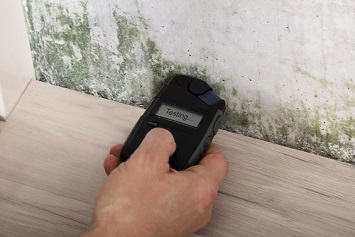Mold in the indoor workplace may not rank among OSHA’s top 10 hazards for workers, but research indicates that indoor mold can adversely affect the health of residents and workers, particularly those with respiratory problems.
“The available science on mold and their potential health effects remains under study, but considerable progress has been made,” stated the American Industrial Hygiene Association in its 2011 publication Facts about Mold. “The U.S. Centers for Disease Control and Prevention (CDC), the Institute of Medicine of the U.S. National Academy of Sciences, the World Health Organization, and Health Canada all agree that living or working in a building with mold damage results in increased risk of respiratory disease.”
To assist employers in identification and removal of mold and its hazards, the National Institute for Occupational Safety and Health (NIOSH) has issued a Dampness and Mold Assessment Tool. The intent of the tool, which NIOSH includes in two documents—one for general buildings and one for schools—is to “help assess areas of dampness in buildings and to help prioritize remediation of problems areas.”
Disease Can Be Severe
Mold grows best in warm, damp, and humid conditions and spreads and reproduces by making spores. According to NIOSH, health problems associated with mold include respiratory symptoms (such as in the nose, throat, and lungs); development or worsening of asthma; hypersensitivity pneumonitis (a rare lung disease caused by an immune system response to repeated inhalation of sensitizing substances such as bacteria, fungi, organic dusts, and chemicals); respiratory infections; allergic rhinitis (often called hay fever); bronchitis; and eczema.
Mold can be found to be hazardous to worker health under the OSH Act’s General Duty Clause as well as in several OSHA standards that require that workplaces be kept clean. For example, the Sanitation Standard for General Industry (29 CFR 1910.141) directs that “all places of employment shall be kept clean to the extent that the nature of the work allows.”
Don’t Count Spores
One problem for employers—as well as worker safety agencies—is that there is no consensus on how much mold causes illness; therefore, OSHA has not and likely will not develop a permissible exposure limit (PEL) for mold as it has for other hazardous air contaminants. Also, the amount of mold that grows can differ from building to building and even from room to room in the same building. As a result, NIOSH does not recommend trying to control the level of fungal spores in the air. “Research studies report that finding and correcting sources of dampness is a more effective way to prevent health problems than counting indoor microbes,” states NIOSH.
Identify and Score
The tool is a 1-page form that employers, employees, and industrial hygienists can use to identify and score the extent of mold found in rooms and furnishings, heating, ventilation, and air conditioning (HVAC) equipment, pipes, and other building components. The scores range from 0 (no problem areas identified) to 3 (combined area of damage is greater than the size of a standard interior door). Damage, stains, and wet or damp areas, which can contain mold or lead to its formation, can also be scored on the form. The form provides checklists that allow easy identification of the specific item of concern and the specific type of damage observed (e.g., peeling, buckling, rust).
For identified problems, NIOSH recommends that facility staff or professional remediators repair all identified sources of dampness and mold and repair or replace the damaged areas or items. NIOSH recommends the U.S. Environmental Protection Agency’s Mold Remediation in School and Commercial Buildings as a source for “proper” remediation guidelines.
NIOSH’s assessment tool is available here.

